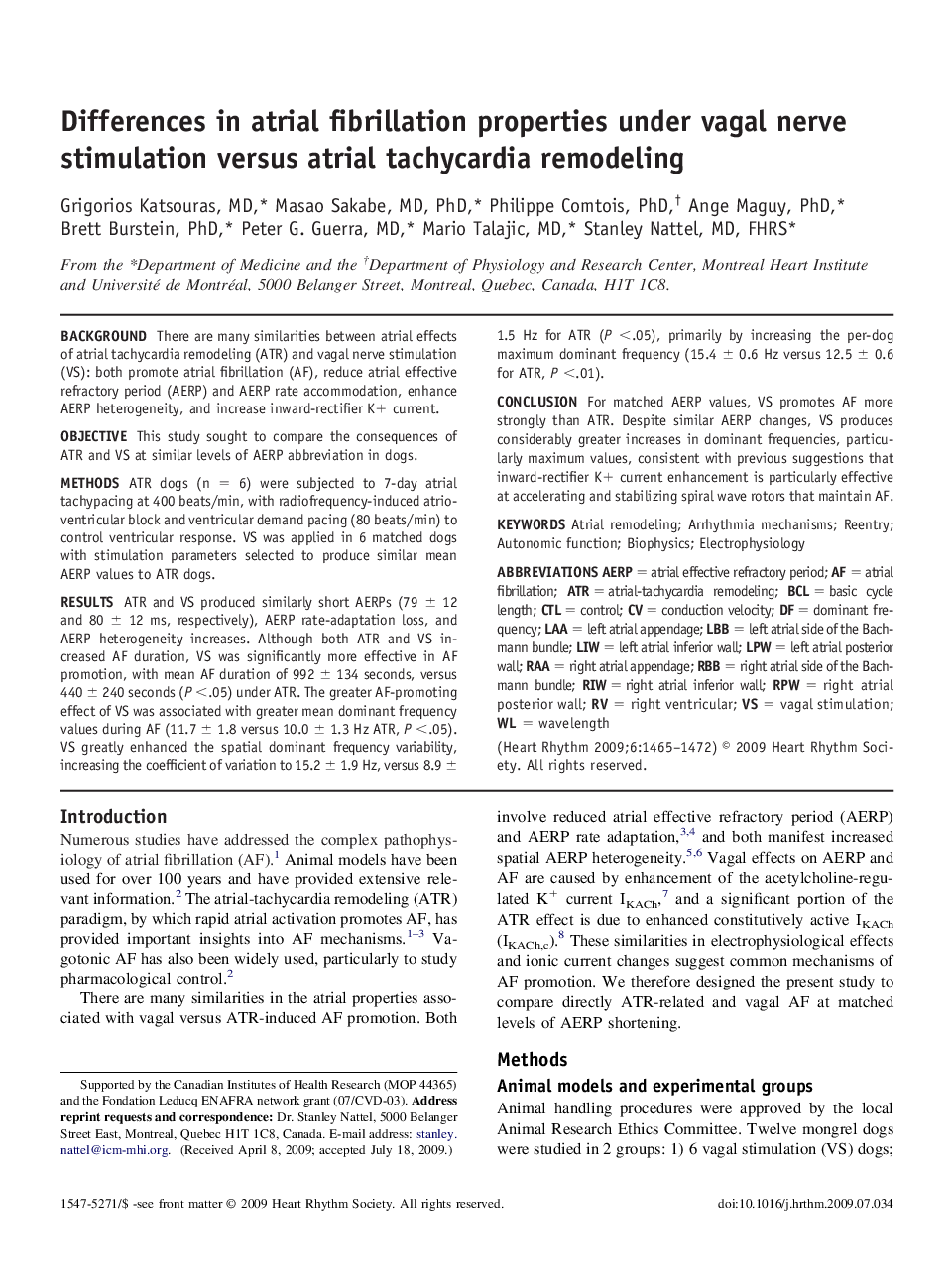| کد مقاله | کد نشریه | سال انتشار | مقاله انگلیسی | نسخه تمام متن |
|---|---|---|---|---|
| 2924271 | 1175900 | 2009 | 8 صفحه PDF | دانلود رایگان |

BackgroundThere are many similarities between atrial effects of atrial tachycardia remodeling (ATR) and vagal nerve stimulation (VS): both promote atrial fibrillation (AF), reduce atrial effective refractory period (AERP) and AERP rate accommodation, enhance AERP heterogeneity, and increase inward-rectifier K+ current.ObjectiveThis study sought to compare the consequences of ATR and VS at similar levels of AERP abbreviation in dogs.MethodsATR dogs (n = 6) were subjected to 7-day atrial tachypacing at 400 beats/min, with radiofrequency-induced atrioventricular block and ventricular demand pacing (80 beats/min) to control ventricular response. VS was applied in 6 matched dogs with stimulation parameters selected to produce similar mean AERP values to ATR dogs.ResultsATR and VS produced similarly short AERPs (79 ± 12 and 80 ± 12 ms, respectively), AERP rate-adaptation loss, and AERP heterogeneity increases. Although both ATR and VS increased AF duration, VS was significantly more effective in AF promotion, with mean AF duration of 992 ± 134 seconds, versus 440 ± 240 seconds (P <.05) under ATR. The greater AF-promoting effect of VS was associated with greater mean dominant frequency values during AF (11.7 ± 1.8 versus 10.0 ± 1.3 Hz ATR, P <.05). VS greatly enhanced the spatial dominant frequency variability, increasing the coefficient of variation to 15.2 ± 1.9 Hz, versus 8.9 ± 1.5 Hz for ATR (P <.05), primarily by increasing the per-dog maximum dominant frequency (15.4 ± 0.6 Hz versus 12.5 ± 0.6 for ATR, P <.01).ConclusionFor matched AERP values, VS promotes AF more strongly than ATR. Despite similar AERP changes, VS produces considerably greater increases in dominant frequencies, particularly maximum values, consistent with previous suggestions that inward-rectifier K+ current enhancement is particularly effective at accelerating and stabilizing spiral wave rotors that maintain AF.
Journal: Heart Rhythm - Volume 6, Issue 10, October 2009, Pages 1465–1472